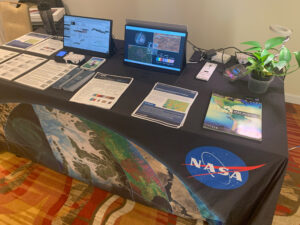A view of Greenland’s ice sheet from the NASA/USGS Landsat 8 satellite, narrated by Dr. Allen Pope. The data enables Dr. Pope to measure the depth of the lakes that form on the surface every summer as the snow and ice melts. The data in this image are from July 12, 2014, and shows the area just south of the Jakobshavn Glacier.
For complete transcript, click here.
Because the lakes are darker than the ice around them, they absorb more energy from the sun. A little bit of melt concentrates in one place, and then melts more, establishing a feedback mechanism accelerating the growth of the lake. When the lakes get big enough they can force open fractures that then drill all the way down to the bed of the glacier, transporting this water to the base where it can temporarily speed up the flow of the ice.
NASA and the U.S. Department of the Interior through the U.S. Geological Survey (USGS) jointly manage the Landsat program, and the USGS preserves a 40-plus-year archive of Landsat images that is freely available over the Internet.
Reference:
Further resources:
+ Download the video from the NASA Science Visualization Studio

Landsat & LCLUC: Science Meeting Highlights
Outreach specialists from the Landsat Communications and Public Engagement team participated in community engagement efforts at the joint NASA and University of Maryland Land Cover Land Use Change (LCLUC) meeting.





